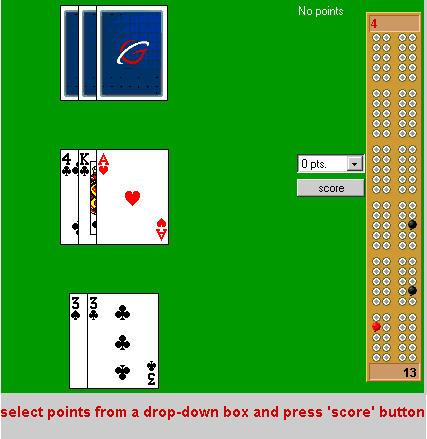To be the first to score 121 points or over (twice round the usual British design of board) accumulated over several deals. Points are scored mainly for combinations of cards either occurring during the play or occurring in a player's hand or in the cards discarded before the play, which form the crib or box.
Board, Pegs & Score
Traditionally, cribbage score is kept by means of a board and pegs. In online game, the score is also denoted numerically below & above the cribbage board. The score on the bottom of the cribbage board (in black) belongs to you. Your pegs are also in black. The score above the cribbage board (in red) belong to your opponent. Opponent's pegs are red.
Starting at one end of the board - usually to the left of the first dealer - the scores are pegged automatically as they occur using their two pegs alternately: the forward peg shows the player's latest score, and the rear peg shows the previous score. Pegs move from outer track of the board starting at the bottom toward the inner track.
In the example of the cribbage board on the right, the score is 13:4 in your favor. The forward black peg is on the 13th hole for you & on the 7th hole for your opponent. The rear black peg for you is on the 4th hole, indicating that the previous score was: 4 for you.
| opp. score |
 |
| your score |
